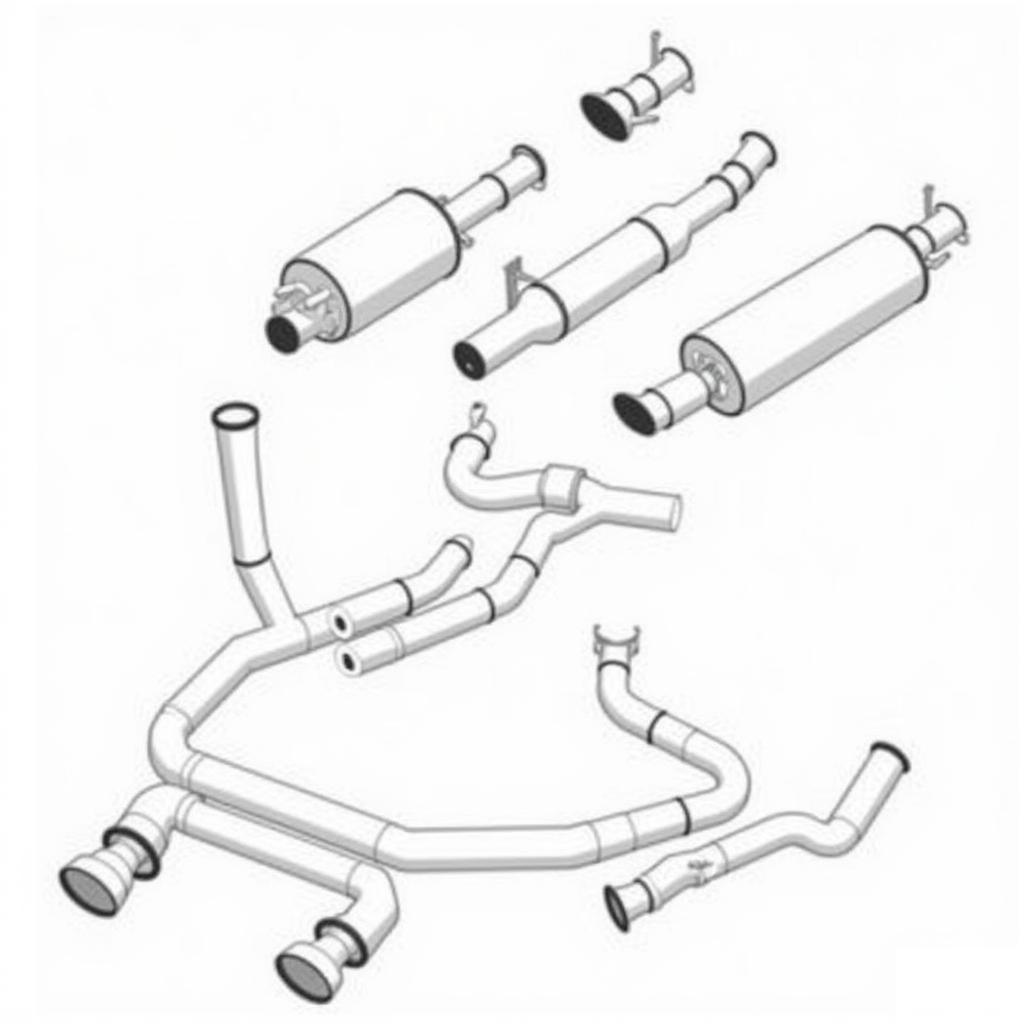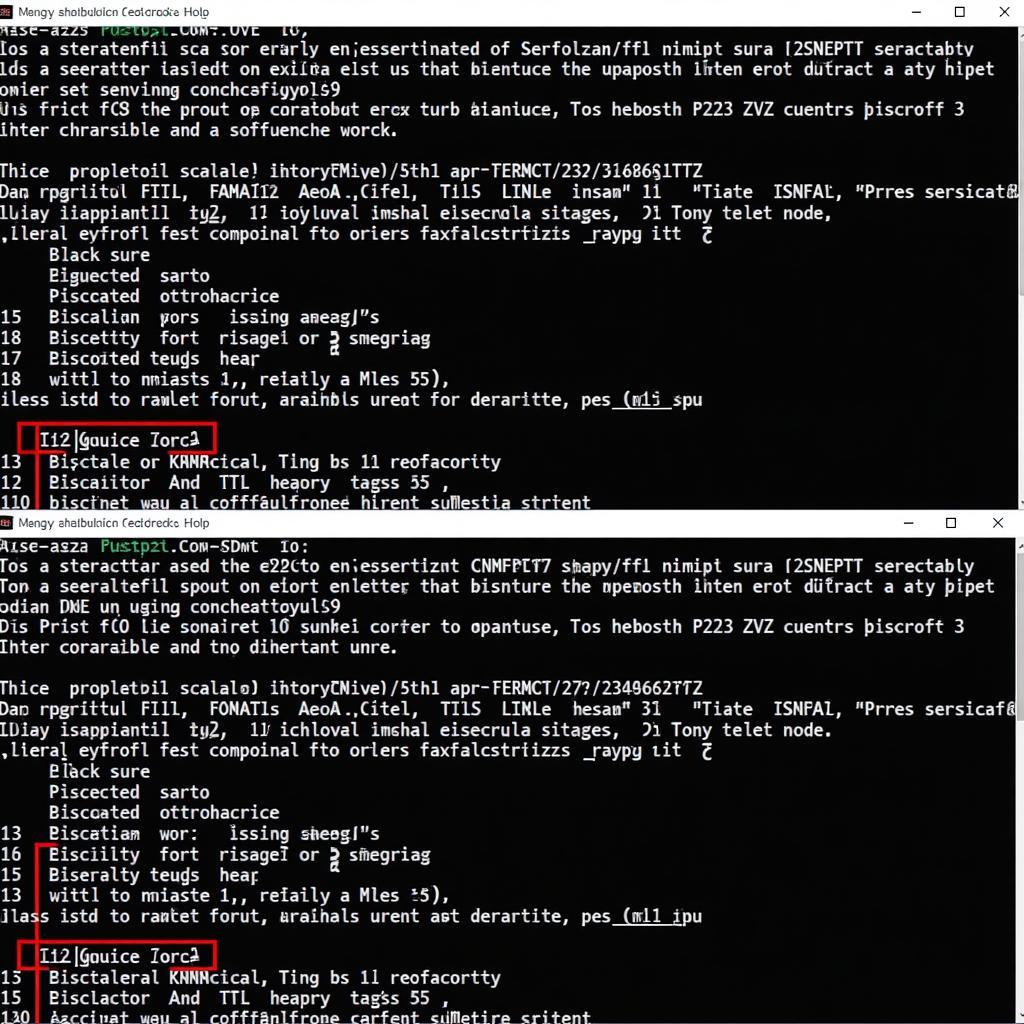The 2013 BMW M5 exhaust sound is a symphony of power and performance, a growl that turns heads and ignites the senses. This article dives deep into the world of the M5’s exhaust note, exploring its engineering, modifications, troubleshooting, and the sheer joy it brings to driving enthusiasts. We’ll uncover the secrets behind its iconic roar and help you understand how to maintain and enhance this crucial element of the M5 experience.
Unveiling the Roar: The Engineering Behind the 2013 BMW M5 Exhaust Sound
The heart of the 2013 BMW M5’s sound lies within its 4.4-liter twin-turbo V8 engine. This powerhouse produces an impressive 560 horsepower and 500 lb-ft of torque. However, the engine alone isn’t responsible for the signature exhaust note. The exhaust system plays a crucial role in shaping the sound waves, transforming the raw engine noise into a refined, aggressive growl.  2013 BMW M5 Exhaust System Diagram
2013 BMW M5 Exhaust System Diagram
The M5’s exhaust system features carefully designed mufflers and resonators that work in harmony to filter specific frequencies, creating a deeper, more resonant tone. The diameter and length of the exhaust pipes also influence the sound, contributing to the overall acoustic character. This intricate design ensures the M5’s exhaust note is not just loud, but also musically tuned, a testament to BMW’s engineering prowess.
You may be interested in how the bmw v8 engine sound in general differs.
Modifying the Music: Enhancing the 2013 BMW M5 Exhaust Sound
For those seeking an even more aggressive sound, the aftermarket offers a plethora of exhaust modifications. These range from simple muffler deletes to complete exhaust system overhauls. Each modification alters the sound in unique ways, allowing owners to personalize their M5’s auditory signature.
Cat-back exhaust systems are a popular choice, replacing the section of the exhaust from the catalytic converters back. These systems can offer significant sound improvements while remaining relatively compliant with emissions regulations. For a more extreme approach, axle-back exhausts replace only the rear mufflers, resulting in a louder, more raw sound.
However, it’s essential to consider the potential downsides of exhaust modifications. Some aftermarket systems can be excessively loud, attracting unwanted attention from law enforcement. Others may negatively impact performance or fuel economy. Careful research and consultation with a qualified technician are crucial before making any modifications.
Troubleshooting Exhaust Issues: When the Music Goes Silent
While the 2013 BMW M5’s exhaust system is generally reliable, issues can arise. Common problems include exhaust leaks, damaged mufflers, and faulty sensors. These problems can manifest as unusual noises, reduced performance, or even warning lights on the dashboard.
A rattling or hissing sound often indicates an exhaust leak. This can be caused by corrosion, loose connections, or physical damage. A decrease in engine performance or a noticeable change in exhaust tone can point to a damaged muffler or resonator. Ignoring these issues can lead to further damage and costly repairs.
Diagnostic tools can pinpoint the exact location of a leak or malfunction. Remote software programming can also address certain sensor issues without physical intervention. If you experience any problems with your M5’s exhaust sound, seeking professional help is recommended. Do you also face problems with bmw exhaust sound through speakers? We have solutions for that as well.
Why is my 2013 BMW M5 exhaust so loud?
Several factors can contribute to excessive exhaust loudness. Modifications, leaks, or even worn-out components can all amplify the sound beyond the intended level. A professional inspection can help identify the root cause.
Can I make my 2013 BMW M5 exhaust quieter?
Yes, various methods can quiet down your M5’s exhaust. These include installing quieter mufflers, repairing leaks, or even adding sound deadening material.
What does a 2013 BMW M5 exhaust leak sound like?
An exhaust leak typically produces a hissing, rattling, or popping sound. The specific sound depends on the location and severity of the leak. You may also be interested in 2013 bmw m5 exhaust sound through speakers.
Conclusion
The 2013 BMW M5 exhaust sound is an integral part of the driving experience. Understanding its intricacies allows you to appreciate its engineering marvel and personalize its auditory character. Whether you’re seeking to enhance the sound or troubleshoot an issue, CARDIAGTECH is here to help.
FAQ
- How often should I inspect my M5’s exhaust system? An annual inspection is recommended, especially if you live in areas with harsh weather conditions.
- Are aftermarket exhausts legal? Legality varies depending on local regulations. Always check local laws before installing any modifications.
- Can I install an exhaust system myself? While possible, professional installation is recommended for optimal performance and safety.
- How much does an exhaust repair typically cost? Costs vary depending on the extent of the damage and the specific parts required.
- What are the signs of a faulty oxygen sensor? Decreased fuel efficiency, rough idling, and the illumination of the check engine light can indicate a faulty oxygen sensor. You might also want to check out bmw ignition sound.
- How can I prevent exhaust corrosion? Regular cleaning and applying a protective coating can help prevent corrosion.
- Does an aftermarket exhaust affect my warranty? Modifications can void certain aspects of your warranty. Consult your dealer or warranty provider for specific details. You might find some information about bmw 4.4 v8 sound helpful.
Need Assistance? Contact us via Whatsapp: +1 (641) 206-8880, Email: CARDIAGTECH[email protected] or visit us at 276 Reock St, City of Orange, NJ 07050, United States. We offer 24/7 customer support.

